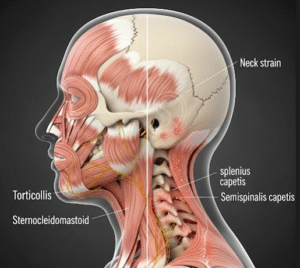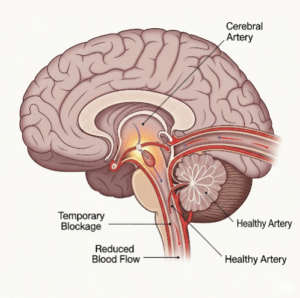Overview
Syringomyelia is a chronic disorder where a fluid-filled cyst, called a syrinx, forms within the spinal cord. Over time, the syrinx can enlarge and elongate, damaging the spinal cord and causing a variety of neurological symptoms. Early diagnosis and appropriate treatment are essential to prevent permanent nerve damage and improve quality of life.
What is Syringomyelia?
Syringomyelia is a condition in which a syrinx (a cavity filled with cerebrospinal fluid) develops inside the spinal cord, most commonly in the cervical region. It is often associated with conditions like Chiari malformation, spinal cord tumors, trauma, or inflammation. The buildup of fluid can compress the spinal cord and interrupt nerve function.
Symptoms
Symptoms vary depending on the size and location of the syrinx but can include:
- Progressive muscle weakness, especially in the arms and hands
- Loss of pain and temperature sensation (typically in a “cape-like” distribution across the shoulders and back)
- Stiffness in the back, shoulders, or extremities
- Chronic pain in the neck, back, or limbs
- Headaches (especially associated with Chiari malformation)
- Bladder and bowel dysfunction in advanced stages
- Scoliosis (especially in children and adolescents)
Causes
The primary causes of syringomyelia include:
- Chiari Malformation Type I – the most common associated condition
- Spinal cord trauma – such as from a car accident or injury
- Spinal cord tumors – benign or malignant growths
- Meningitis or arachnoiditis – inflammation of the spinal cord membranes
- Congenital abnormalities – present at birth
Risk Factors
- Congenital malformations of the skull or spine
- History of spinal cord injury
- Previous spinal surgery
- Tumors or lesions in the spinal cord
- Infections involving the central nervous system
Complications
If left untreated, syringomyelia can lead to:
- Irreversible nerve damage
- Muscle atrophy and paralysis
- Chronic pain
- Scoliosis or spinal deformity
- Loss of coordination and balance
- Autonomic dysfunction (bladder/bowel issues, blood pressure problems)
Prevention
While syringomyelia itself may not be preventable, early diagnosis and treatment of underlying conditions like Chiari malformation or spinal trauma can help reduce the risk of syrinx formation and complications. Regular follow-up with a neurologist or neurosurgeon is advised if you’re at risk.
Treatment Options in Korea
South Korea offers high-quality care for syringomyelia with advanced diagnostics, neurosurgical expertise, and personalized management plans.
- Diagnosis
- MRI (Magnetic Resonance Imaging): the gold standard for identifying syrinx and related abnormalities
- CT Myelography: occasionally used to evaluate spinal cord flow dynamics
- Neurological Examination: to assess the extent of nerve involvement
- Medical Management
- Monitoring: in cases with mild symptoms or slow progression, regular imaging and observation may be recommended
- Pain management: including medications and physical therapy
- Surgical Treatment
- Posterior Fossa Decompression: the most common surgery for Chiari malformation-related syringomyelia
- Syrinx-Subarachnoid Shunt: to drain the syrinx and relieve pressure
- Tumor removal: if a spinal tumor is the cause
- Spinal cord untethering or decompression: in cases related to trauma or scar tissue
- Rehabilitation
- Physical Therapy: to improve muscle strength and coordination
- Occupational Therapy: to help with daily activities
- Psychological Support: for patients dealing with chronic pain or disability
- Leading Centers in Korea
- Seoul National University Hospital
- Samsung Medical Center
- Yonsei Severance Hospital
- Asan Medical Center
These hospitals are equipped with advanced neuroimaging and minimally invasive surgical facilities, offering comprehensive treatment for syringomyelia.













